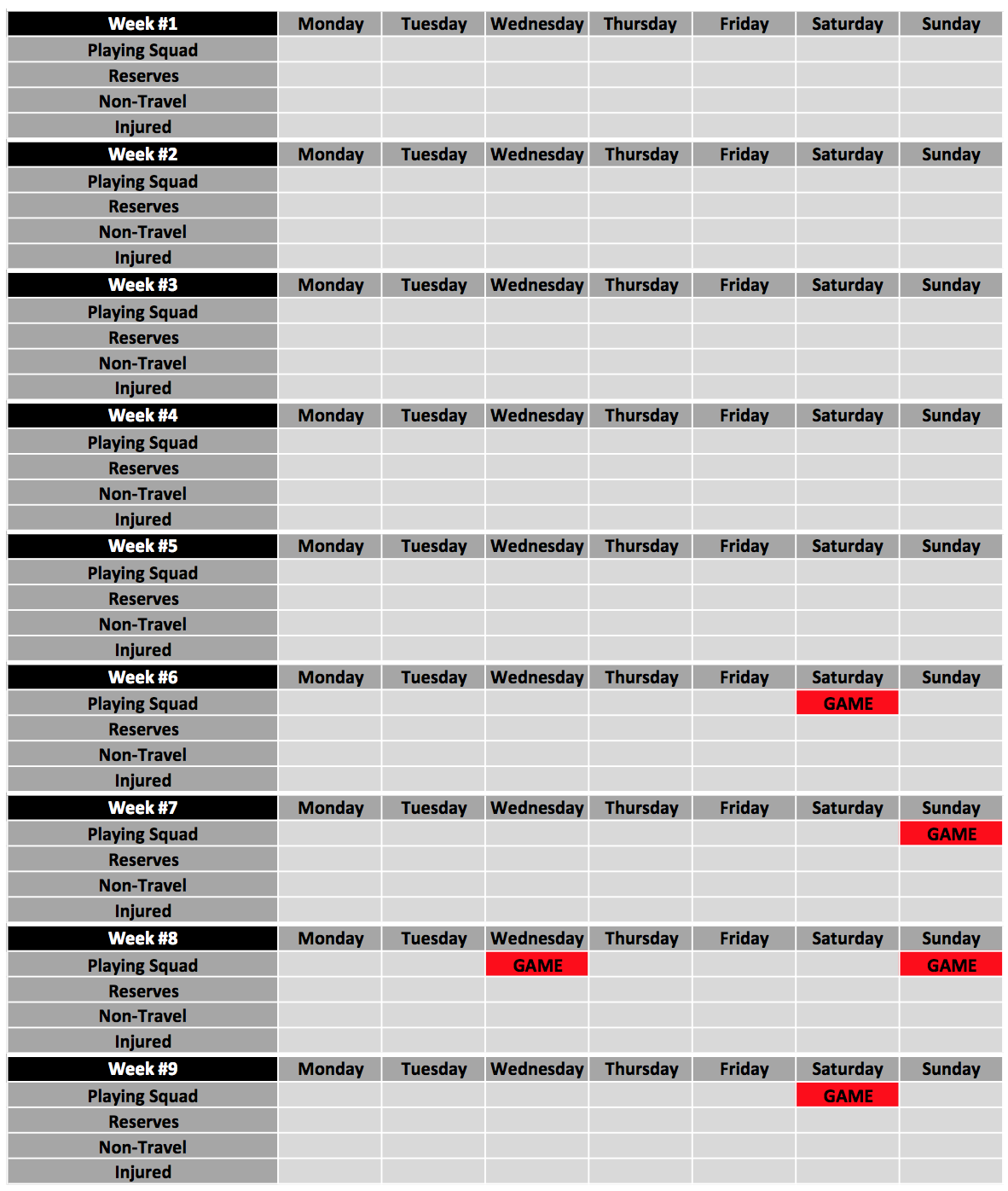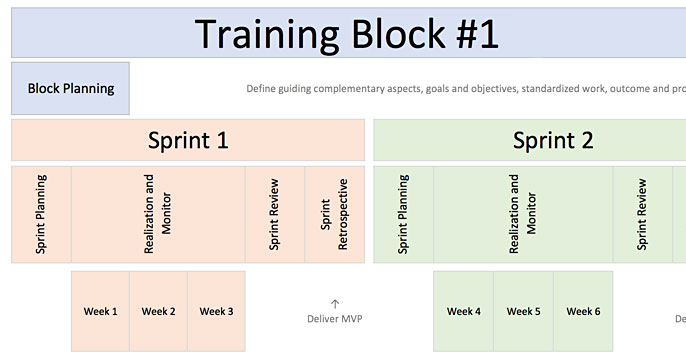Physical Preparation for Team Sports: Weekly Plans – Part 6
Previus Part:
Physical Preparation for Team Sports: Weekly Plans – Part 5
In this final piece of Weekly plans, I am providing practical example using very common and realistic scenario.
Weekly Plans: Summary and putting it together
To create a simple program and showcase on how to use the “puzzles” we will assume that we have 6 weeks of preparatory period and will model 4 weeks of competition period with 5 games. This is pretty realistic scenario.

Figure 18. Hypothetic scenario
We will get in more details with this example after we cover training components in more details, but for now we are only going to lay down the constraints (i.e. “puzzles”).
But here is the Catch 22 – with agile periodization we should not plan too far ahead or in too much details, but rather provide general constraints and iterate through planning using formal planning sessions (also knows as agile events) . Reading periodization books with precisely laid out plans and programs for a long period of time (i.e. a year or half a season) gives you this illusion (“ludic fallacy” and “planning fallacy”) that planning is one event that happens before plan realization . So, if I lay out a precise plan for 9 weeks, I would not be agile. For this reason, look at this only as an example of how layering the mini-blocks might work and remember that (agile) planning is not one-time event, but happens in regular intervals. Keeping in mind that this layering should be flexible, but at least it gives us some constraints (or “jig” to use the term from carpentry) that can help us organize things.
Another issue we mentioned in one of the previous chapters , and it bears repeating it, is the idea of setting up training components up front and progressing them and varying them. We again get this wrong impression from looking at finished annual plans. For example, we see “Aerobic Capacity”, “Hypertrophy”, you name it, with their periodizations and progressions. But I believe this is bad approach. First of all, these categories mean nothing in team sports – so we need to rely more on “tactical” (or skill) periodization (or planning). Second, setting up the categories before we have even seen the athletes is futile exercise. What we need to do instead, is to create a minimum viable program (MVP) to probe the system and learn about our athletes, context and culture, to induce minimum viable performance and to actually identify the problems and limiting factors, both individual and team ones. During this process we identify certain factors/components that represents a “jig” idea as well (something to constraint us), and we use those to help us plan. But this does not mean we are going to stick with these components – we might “re-evaluate” our “jig” after some time and decide on using something else. This is also something to keep in mind when looking at filled in long-term plans and “a priori” training components that need to be “periodized”.
Week 1
For week #1 we do not plan any friendly games, and pretty much all athletes should be non-injured and all functional groups aligned.

Figure 19. Week #1
Week 2
In week #2 we schedule a 45min game (half game) where all of our players get to play. In the case where there are more players that don’t get a chance to play, we can schedule a hard training session for them on the day of the match or perform extra conditioning. The functional groups are still aligned.

Figure 21. Weeks #3 and #4
The functional groups start to differ a bit and we might break a rule or two. But that is fine, as long as we know we are breaking them. For example, Friday for a training squad is a Hard day, right after the recovery session, and on a 2nd day after a 60min match (G+2). So this day can be modified to Medium if needed, or the playing squad can perform Taper 1 with reserves and non-travel groups. This why it is important for the plan to be flexible – we do not know how the athletes might react, but since we know we “broke” the rule, we should have plan B ready for that day, or discuss other options with the athletes themselves.
Also, the 60/30 games in the week #4 can be changed to 90/0 if needed (i.e. you want to ramp up to full game as soon as possible, so the playing squad can have 2 or more full time games before the season starts):











Responses